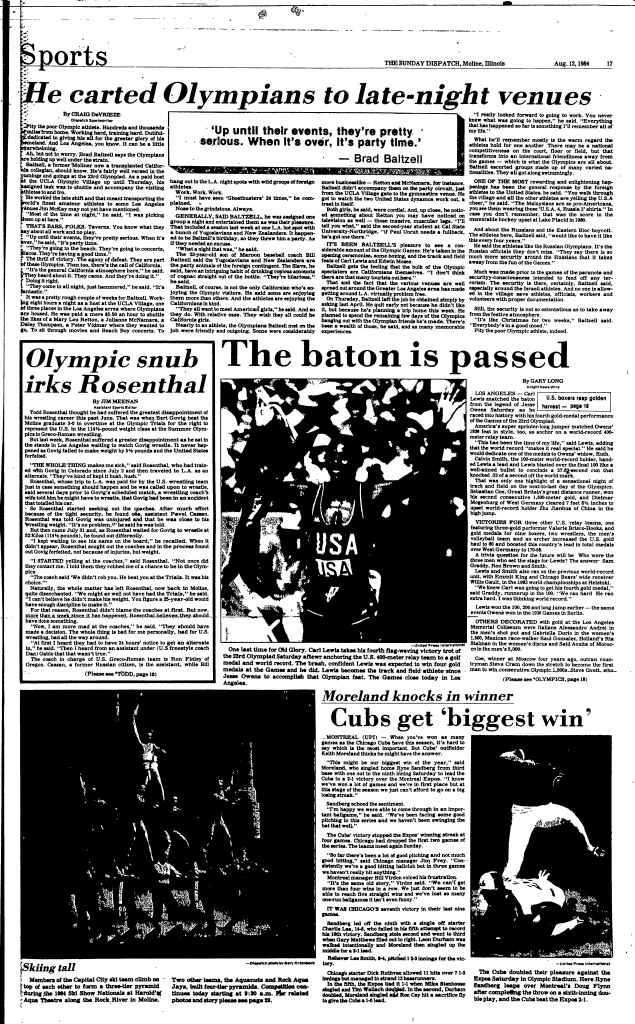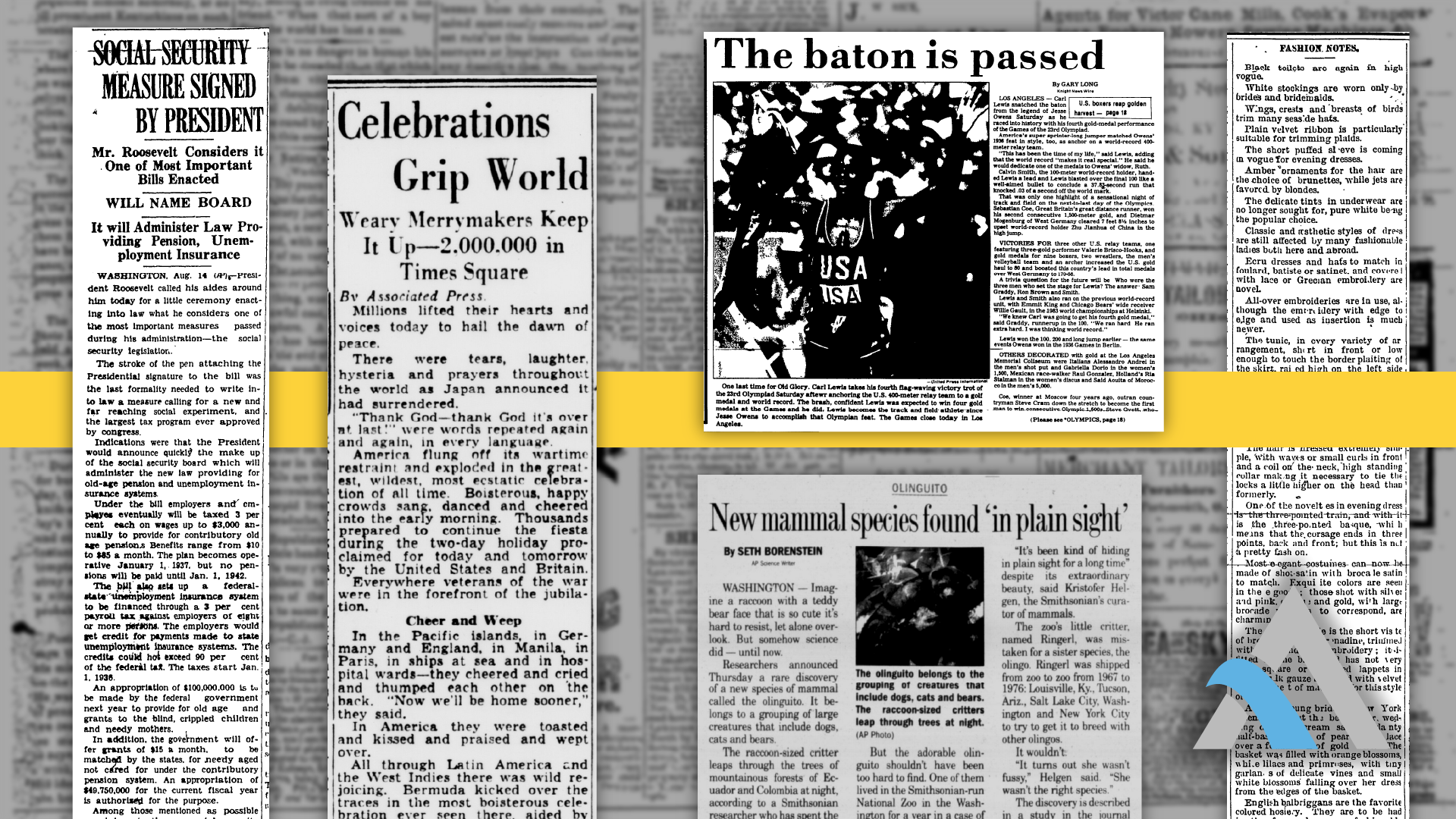Sometimes the answer you are looking for is the one hiding in plain sight. This was certainly the case for Kristofer Helgen and his team, who set out into the cloud forests of South America to answer the question of a mistaken identity. In many museum collections, his team found multiple teeth and pelts labeled as Olingo samples, yet they looked different from their scientific understanding of the species. Helgen began to wonder if these samples were from a different species, potentially mislabeled, and set out on the hunt. Their answer was found in the treetops of the cloud forests of Ecuador and Colombia, where the fog at times becomes so dense it hides the forest canopy. It was in this fog that they found the Olinguito, a new species of carnivorous mammal that had previously been mistaken for its larger relatives, the olingo. The DNA in the animals they found in the cloud forests was a perfect match to the samples they suspected were mislabeled, confirming the suspicions of Helgen’s team.
Further, they discovered that not only was the species still alive, there were thousands of them living in the cloud forests, where they managed to stay relatively hidden by rarely leaving the trees. The Olinguito is a member of the Procyonidae family, the same as raccoons. Published the same day as the Smithsonian’s announcement, The Quincy Herald Whig described the animal as looking like an adorable mix between a cat and a teddy bear, about the size of a raccoon. The Smithsonian announced the discovery of the new species on August 15th, 2013. Many scientists explained that this announcement was shocking to many, as new carnivorous mammal species are rarely discovered. Many also hoped that the discovery of the cute little creature would help promote forest conservation in South America. This story is the perfect example of how sometimes the answers you look for are right in front of you.

During the 1984 Olympics held in Los Angeles, the now-famous athlete Carl Lewis achieved something that previously only Jesse Owens had. As a college student, he first qualified for the 1980 Olympic Games in Moscow, but did not compete and instead joined other athletes in boycotting the games. He qualified once again for the 1984 Olympic Games, where he competed in four track and field events– the 100m, 200m, 4x100m relay, and long jump. Throughout the games, he placed first in each event, winning four gold medals in a single Olympic game by August 12th, 1984. In the Daily Dispatch, they quoted Lewis as saying that the 1984 Olympic Games were the time of his life. Previously, this achievement had been attained only by the legendary athlete Jesse Owens, who won four gold medals in track and field at the 1936 Olympic Games in Berlin. In the following years, Lewis continued to win medal after medal, and by the end of his Olympic career had collected 9 gold medals. Except for American swimmer Michael Phelps, who holds 23, no other Olympic athlete has won more than 9 gold medals.
(1945 – 1980s) Surrender Incoming: V-J Day, 1945
By August 14th, 1945, Japan had been decimated by not one, but two atomic bombs, and began to surrender. Europe had long been defeated, but the allies still had the Japanese to defeat before the war could officially be over. Then came V-J Day. After receiving terms of surrender from the allied forces, Japan prepared its reply as the news spread. Even before the Japanese reply was received, massive crowds of people flooded the streets all across the world to celebrate the Allied victory. In the Newark Evening News, they reported that over 2 million people took to Times Square to celebrate. V-J Day is celebrated on August 15th in most countries, like the United Kingdom. However, in the United States, V-J Day is celebrated on September 2nd, the day that the surrender agreement was signed by the Japanese.

Hot off the heels of the Great Depression, President Franklin D. Roosevelt was inspired to create a way for retirees to continue to receive funds for their living expenses. From this idea, the Social Security Act was born. The Social Security Act established a national pension system for old-age Americans. In simple terms, money is gathered through payroll taxes on employers and employees, which they receive post-retirement, the amount depending on their contributions. The act also helped to ease the effects of unemployment and increase available public welfare. The Social Security Act was signed into law on August 15th, 1935, in what the Moultrie Observer described as a small ceremony for what Roosevelt considered one of the most important measures passed under his administration. Social Security is still in place today and has helped Americans navigate retirement, unemployment, and other life events with a little more ease.
(1824 – 1914) What to Wear: Fashion Advice From 1883
Finally, I have something that technically isn’t a ‘historical event’, but rather an interesting section I found in an old paper that I wanted to share. In the Amesbury and Salisbury Village, one section often included was about the most recent fashion trends. The list of fashion notes published on August 16th, 1883, included some interesting home and fashion trends. Here are the trends you would want to follow if you were living in 1883!
First of all, get rid of your boring regular toilets, and instead opt for a black toilet, which is very high in vogue. Second, unless you’re getting married or in a wedding, ditch the white stockings. That is not to say to avoid white completely; instead, it is favorable in undergarments. Birds and feathers were very popular when accessorizing hats and bonnet trimmings, as well as embroidery. Finally, there were many specific guidelines when it came to which dress to wear and how to wear it, so you would want to be sure to check before you leave the house.
The Amesbury CHA has so many other news pages just like this one, which can provide you with endless 1880s fashion advice!
Join me again next week to discover more of history’s hidden gems and timeless tales.
Explore the “Read All About It” archives to read stories that spotlight our partners and their communities, announcements from our team, updates on current projects, and so much more. Discover articles about engagement, outreach, primary sources, community, digitization, education, and other topics of interest. Delve into the happenings in this week in history and take a deep dive into the events and people who helped shape our communities, our nation, and the world.
Hear Ye, Hear Ye, READ ALL ABOUT IT!
Advantage Archives works to build strong, community-based partnerships to provide free online access to local history, making it discoverable and easily accessible to anyone, anywhere, at any time, on any device. This allows communities to understand and connect to their past in a meaningful way. Through the Community History Archive search platform, we provide the community with the means to explore, discover, learn from, connect with, and share the stories of the people, places, and events that shaped their community.
The Community History Archives are intended to serve as a “portal to the past”, allowing local primary source documents to give an accounting of history as told by the individuals that witnessed it. Advantage Archives guiding principals center around building strong community-based partnerships, which is why we enter into them with the intent of shouldering our fair share, and taking the burden off of the community for the ongoing costs associated with storage, hosting, development, and maintenance of the Community’s History Archive. We are an active participant in the community’s efforts to make their collective history more accessible. The Community History Archives are maintained for free by Advantage and do not require a subscription, seat license, annual support contract, or any other ongoing costs or expenses to the institution or members of the community.
If you would like to see more local history online, please contact your local library, newspaper publisher, genealogical society, historical society, or educational institution, and encourage them to learn more about creating a Community History Archive or have them contact Advantage Archives at (855) 303-2727



